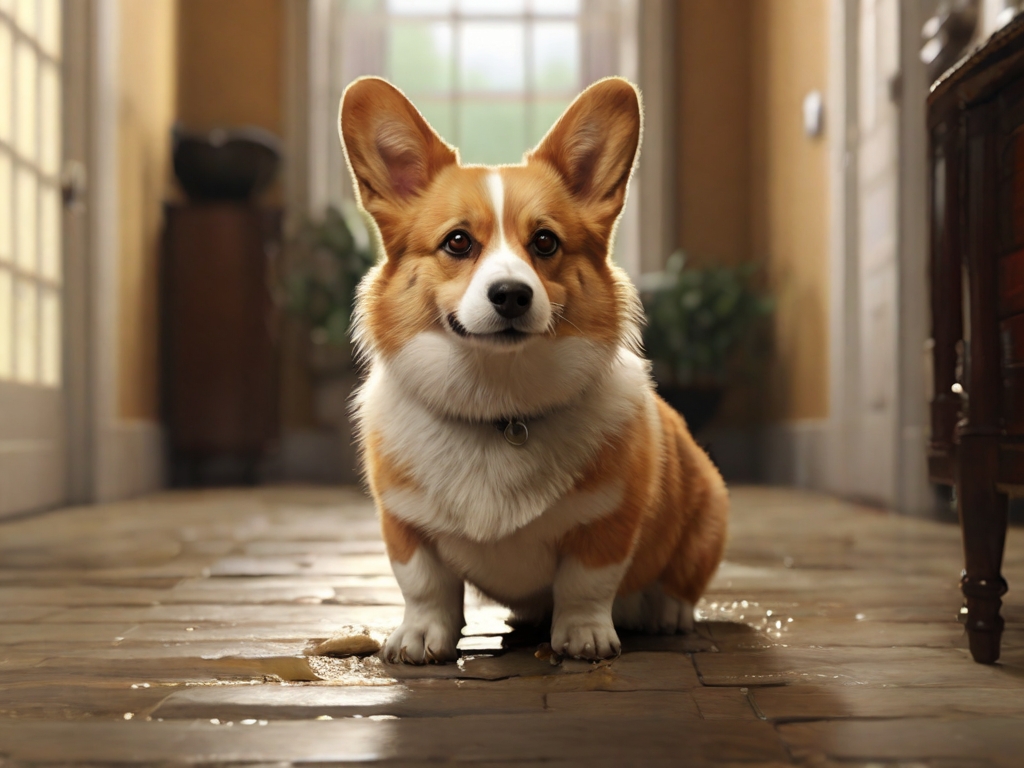Dog inappropriate elimination, encompassing urinating or defecating indoors, can be a challenging issue for pet owners to address. It can stem from various causes, including behavioral, medical, or environmental factors. Understanding the root cause is crucial in effectively managing and resolving this behavior.
Symptoms
Understanding the symptoms and identifying when a dog is urinating or defecating in atypical or unwanted locations is crucial for pet owners to address this behavior effectively. By recognizing the signs early on, pet owners can take appropriate steps to address the underlying causes and prevent further incidents.
Urinating and Defecating Indoors
- Frequent Accidents: Dogs may urinate indoors more frequently than usual, even shortly after being taken outside.
- Urinary Odor: A strong odor of urine indoors, particularly in areas where the dog spends time, may indicate inappropriate elimination.
- Submissive or Excited Urination: Some dogs may urinate indoors as a submissive gesture or when overly excited, often accompanied by submissive body language such as crouching or rolling over.
- Finding Feces Indoors: Discovering feces in unexpected locations within the home, such as on carpets or floors, is a clear indication of inappropriate elimination.
- Irregular Bowel Movements: Dogs may exhibit irregular bowel movements, including diarrhea or constipation, leading to accidents indoors.
- Avoidance of Elimination Areas: Dogs may avoid designated elimination areas, such as a litter box or outdoor potty area, and instead choose to defecate indoors.
Behavioral Causes
Anxiety and Stress
Dogs, like humans, can experience anxiety and stress due to various triggers such as changes in routine, separation from their owners, or the presence of unfamiliar people or animals. In response to stressors, dogs may resort to inappropriate elimination as a coping mechanism.
Lack of Proper Training
In some cases, inappropriate elimination can be attributed to insufficient or inadequate training during a dog’s formative months. Without proper guidance, dogs may not learn where it is acceptable to eliminate, leading to accidents indoors.
Medical Causes
Urinary Tract Infections (UTIs)
Urinary tract infections can cause discomfort and increased urgency to urinate in dogs. This may lead to accidents indoors, as the dog struggles to hold their urine or may associate the litter box or designated elimination area with pain.
Gastrointestinal Issues
Digestive disorders or dietary intolerances can result in irregular bowel movements or diarrhea, prompting a dog to defecate indoors. Medical conditions affecting the gastrointestinal tract should be evaluated by a veterinarian to rule out underlying health concerns.
Environmental Factors
Changes in Living Situation
Moving to a new home, changes in household dynamics, or the addition of a new pet can disrupt a dog’s sense of security and routine. This upheaval may trigger stress-related behaviors, including inappropriate elimination.
Lack of Access to Outdoors
Limited access to outdoor elimination areas or insufficient opportunities for regular walks can contribute to indoor accidents. Dogs require adequate opportunities to relieve themselves outdoors to maintain proper elimination habits.
Addressing Dog Inappropriate Elimination
Consultation with a Veterinarian
If a dog exhibits signs of inappropriate elimination, it is essential to consult with a veterinarian to rule out any underlying medical conditions. A thorough physical examination, along with diagnostic tests such as urinalysis and fecal examination, can help identify any health issues contributing to the behavior.
Behavior Modification Techniques
Behavior modification techniques, including positive reinforcement training and environmental management, can help address inappropriate elimination in dogs. Establishing a consistent routine, providing ample opportunities for outdoor elimination, and rewarding desired behaviors can help reshape the dog’s elimination habits.
Environmental Enrichment
Creating a stimulating and comfortable environment for the dog can alleviate stress and anxiety, reducing the likelihood of inappropriate elimination. Enrichment activities, such as interactive toys, regular exercise, and mental stimulation, can help channel the dog’s energy in a positive direction.
Consistency and Patience
Resolving inappropriate elimination behavior requires patience and consistency from pet owners. It may take time for the dog to adjust to new routines and habits, so persistence and positive reinforcement are key to success.
Conclusion
Dog inappropriate elimination can pose challenges for pet owners, but with a comprehensive understanding of the underlying causes and effective management strategies, it can be addressed successfully. By addressing behavioral, medical, and environmental factors, pet owners can help their dogs develop appropriate elimination habits and maintain a harmonious household.



